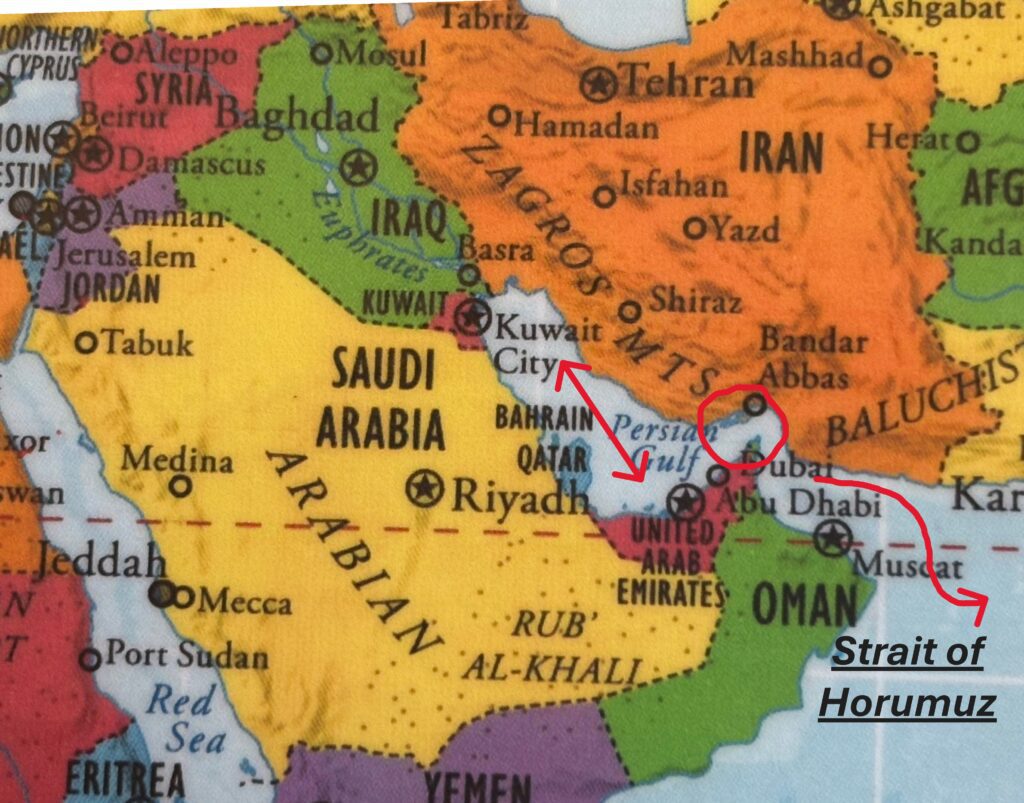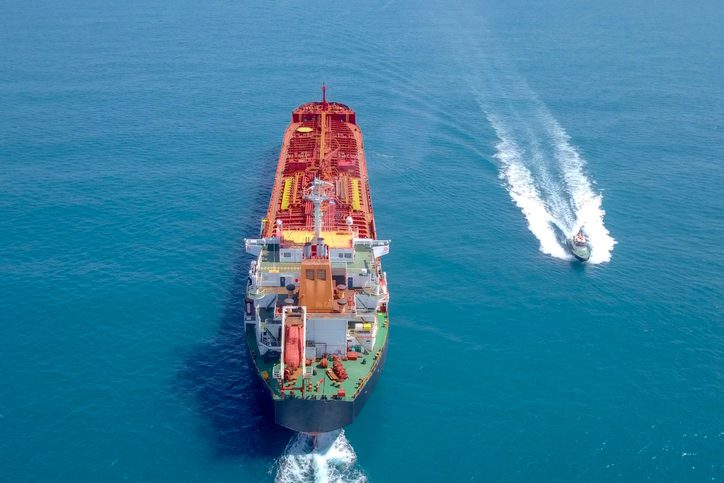

Introduction: The Strait of Hormuz is arguably the world’s single most critical energy chokepoint, a narrow waterway where global power dynamics play out with immense consequences. Connecting the Persian Gulf to the wider Arabian Sea, and with Iran acting as a de facto gatekeeper from its northern coastline, it oversees a waterway bordered by oil rich nations. This strategic passage is indispensable for the global flow of oil, petroleum products, and natural gas. With frequent tensions and the explicit threat of closure from Iran, the Strait of Hormuz is a constant barometer of global energy security and geopolitical stability. Any significant disruption here would trigger immediate and severe worldwide economic repercussions, making it a focal point of international concern for the global energy infrastructure and supply resilience.
Geography – A Narrow, Strategic Passage:
- This pivotal strait separates Iran to the north from the United Arab Emirates (UAE) and Oman to the south.
- The Strait of Hormuz is approximately 104 miles (167 km) long, with a width varying from about 24 miles (39 km) to 60 miles (97 km).
- At its narrowest point, the navigable shipping lanes are significantly restricted, just 2 miles wide in either direction, separated by a 2-mile buffer zone.
Key Facts & Importance:
- Global Oil Lifeline: The Strait of Hormuz is the world’s most important oil transit chokepoint. In 2024, approximately 20 million barrels per day (b/d) of petroleum liquids (crude oil, condensate, and refined products) flowed through, accounting for about 20% of global petroleum liquids consumption and one-quarter of total global seaborne oil trade (U.S. Energy Information Administration).
- Critical LNG Corridor: Around one-fifth of global liquefied natural gas (LNG) trade also transited the Strait of Hormuz in 2024, primarily from Qatar.
- Persian Gulf Producers’ Lifeline: The major oil and gas producing nations bordering the Persian Gulf – including Saudi Arabia, Iraq, UAE, Qatar, Iran, and Kuwait – have virtually no practical alternative maritime access for the vast majority of their oil and gas exports beyond this passage.
- Asia’s Energy Dependence: An estimated 84% of crude oil and 83% of LNG transiting Hormuz in 2024 went to Asian markets, with China, India, Japan, and South Korea being top destinations, making them most vulnerable to disruption.
Geopolitical Considerations:
- Iran’s Strategic Leverage: With Iran strategically positioned to control the access of the Strait, the Strait is a frequent flashpoint. Iran has repeatedly threatened to close the Strait, leveraging its control to respond to international sanctions or perceived military actions. Its parliament even voted in favor of closure recently.
- “Threat of Blockade” vs. Reality: While a complete, prolonged blockade is considered unlikely due to the significant deterrent of the U.S. naval presence (U.S. Fifth Fleet based in Bahrain) and the self-defeating impact on Iran’s own exports (which rely 96% on this Strait), the explicit threat or any harassment of vessels immediately spikes “war risk” insurance rates and additional premiums, significantly increasing shipping costs, similar to recent surges seen in the Red Sea.
- Global Economic Impact: Analysts predict that even a temporary disruption or closure could send oil prices soaring (e.g., to $120-$130 per barrel or higher), causing a significant inflationary shock and impacting global GDP.
Maritime Hazards & Modern Challenges:
- High-Stakes Confrontations: The narrowness and immense strategic importance lead to frequent tense encounters between military forces (particularly U.S. and Iranian navies) and a high potential for miscalculation.
- Targeting & Harassment: Commercial shipping faces risks from attacks, seizures, and harassment (e.g., Iranian actions against tankers accused of smuggling or linked to adversaries). The use of naval mines, anti-ship missiles, and drones by various actors poses significant threats. GPS and AIS interference are also reported.
- Congestion & Accident Risk: Despite defined shipping lanes, the sheer volume of traffic and the political volatility create a heightened risk of collisions and accidental incidents.
- Sheer Size of VLCCs: The presence of Very Large Crude Carriers (VLCCs), which can be over 1,200 feet (365 meters) long and carry 2 million barrels of oil, compounds the navigation challenges and significantly increases the potential scale of environmental and economic disaster in the event of an incident within the narrow strait.
